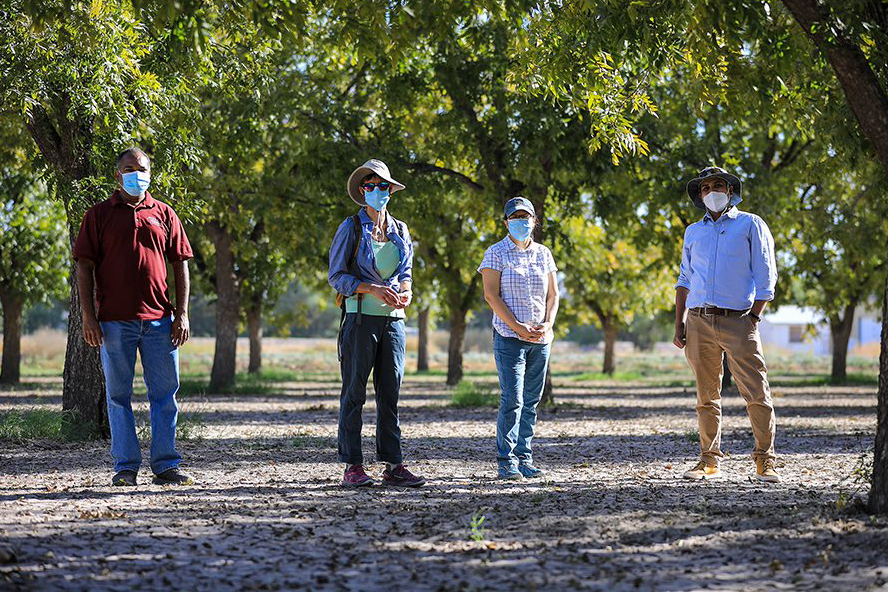Two UTEP professors received a $586, 392 grant from the National Science Foundation to study abiotic carbon dioxide (CO2) dynamics in irrigated agricultural systems in the El Paso region drylands.
Associate professor of geology, Lixin Jin, Ph.D., and her collaborator Marguerite Mauritz-Tozer, Ph.D., research assistant professor of biology, are the principal investigators of this project that seeks to quantify the CO2 contributions of inorganic soil components in a natural or managed ecosystem. In collaboration with Texas A&M University (TAMU) Agrilife Research Center in El Paso, the researchers will utilize both small- and large-scale innovative data collection methods to measure CO2 efflux in the soil of local irrigated pecan orchards.
The high evaporation pressure of dryland ecosystems results in a greater accumulation of calcium carbonate which crystallizes between the particles of the soil. The depletion of surface water due to intensified agriculture of dryland soil has caused farmers to become increasingly reliant on groundwater.
Groundwater, which contains a higher bicarbonate concentration, makes the soil more susceptible to calcium carbon crystallization and salt accumulation, rendering it unusable for crops. The accelerated process, at which the crystallization occurs, makes this environment a prime area for conducting research on carbon dynamics.
Mauritz-Tozer said various studies focus on the organic and biological processes, but inorganic components remain relatively unquantified.
“The focus of our project is to quantify inorganic carbon contribution to carbonates using agricultural systems,” Mauritz-Tozer said. “Understanding this inorganic contribution and the factors that contribute to stabilization and destabilization is an important component of better understanding carbon dynamics of dryland soil.”
The study will be conducted through a combination of smaller, labor intensive, concentrated readings. Small chambers will be used to capture CO2 emissions from the ground and, using unique isotope property identification, organic and inorganic emissions can be separated and have their CO2 contributions quantified.
According to the leading researchers, eddy covariance towers will be utilized to accomplish this on a larger scale. The tower is equipped with an instrument that measures both wind dynamics and the CO2 concentration in the air to determine how much carbon is being released into the ecosystem.
Additionally, TAMU collaborators will aid in scaling the project over a larger area using UAV remote sensors to detect ground level CO2 emissions, which can then be related to concentrations of inorganic dynamics.
The multi-faceted observations of this study will greatly benefit agricultural and environmental research and many subsequent bio-geological investigations thereafter, Mauritz-Tozer said.
Understanding the relationship between intensified agriculture and the disturbance of carbonate formations releasing CO2 into the atmosphere contributes to sustainability research and the health of both crops and the population.
Mauritz-Tozer said the sequestration of carbon by dryland soil implies possible uses as a mitigation tool for climate change.
Having worked on calcium carbonate dynamics for several years, Jin has compiled preliminary baseline data which will be used to supplement the various data collection techniques. Though the project received funding in fall 2020, January 2021 marked the official starting date, as the team is currently in the process of obtaining the necessary equipment and hiring graduate students to assist.
Julian Herrera may be reached at [email protected].











